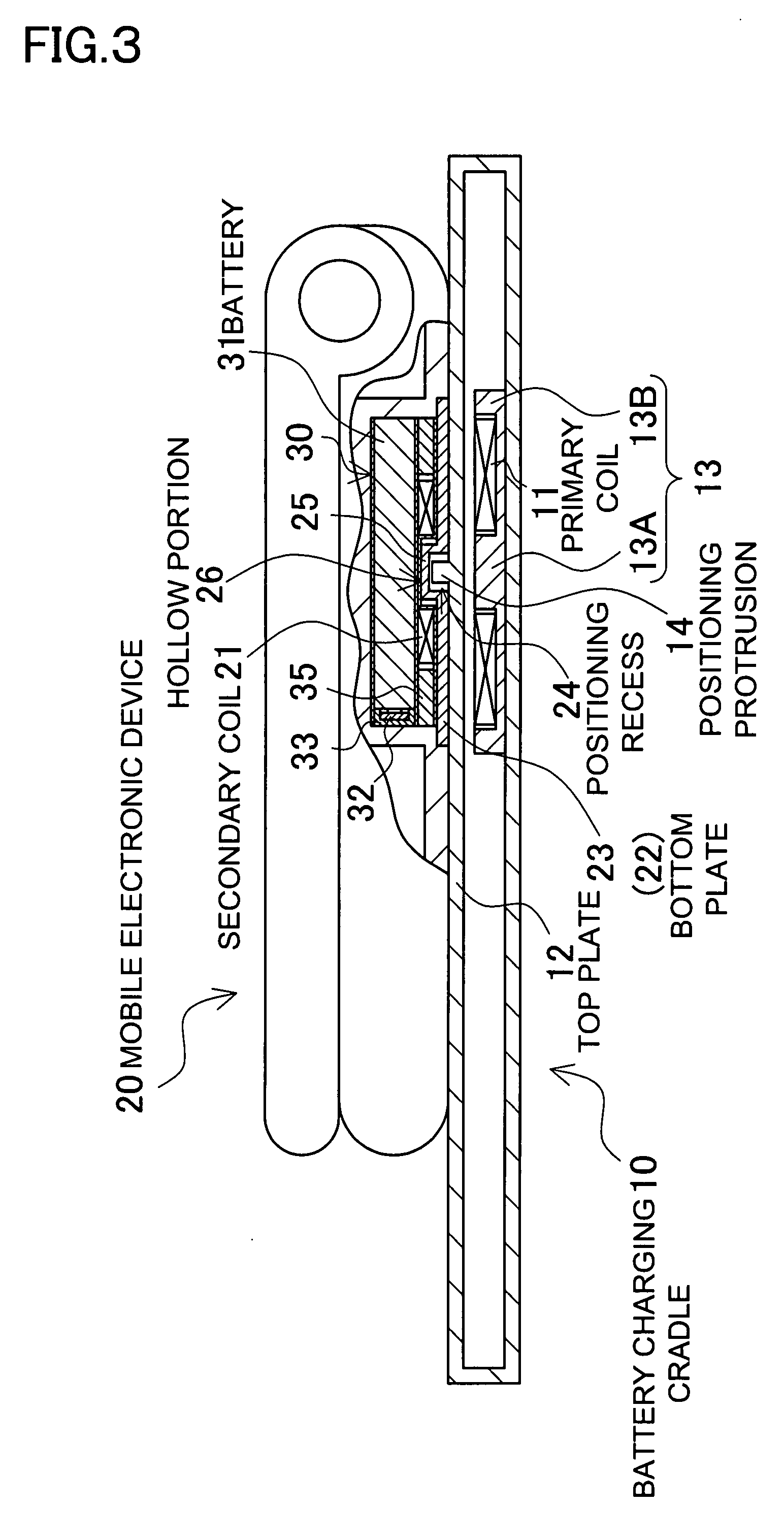Battery charging cradle and mobile electronic device
a charging cradle and battery technology, applied in electric power, electric vehicles, transportation and packaging, etc., can solve the problems of insufficient thinness of the portion of the secondary-side charging adaptor, the inability to charge the battery pack, and the inability to carry ac electric power from the primary coil to the secondary coil, so as to avoid relative misalignment
- Summary
- Abstract
- Description
- Claims
- Application Information
AI Technical Summary
Benefits of technology
Problems solved by technology
Method used
Image
Examples
Embodiment Construction
)
[0041]FIG. 1 through FIG. 6 show a battery charging cradle 10 and a mobile electronic device 20 that is placed on the battery charging cradle 10 to charge an incorporated rechargeable battery 31. The battery charging cradle 10 incorporates a primary coil 11 that is connected to an AC power source 15. The battery charging cradle 10 is provided, on its top surface, with a planar, top plate 12 on which the mobile electronic device 20 is to be detachably placed. In the illustrated battery charging cradle 10, the top plate 12 is planar in its entirety and is disposed horizontally. The battery charging cradle 10 allows a variety of mobile electronic devices 20 in different sizes and shapes to be placed on the cradle so that the incorporated rechargeable battery can be charged. The battery charging cradle, however, may also be provided with a peripheral wall on around the cradle, so that the mobile electronic device may be placed inside the peripheral wall so as to charge the incorporated...
PUM
 Login to View More
Login to View More Abstract
Description
Claims
Application Information
 Login to View More
Login to View More - R&D
- Intellectual Property
- Life Sciences
- Materials
- Tech Scout
- Unparalleled Data Quality
- Higher Quality Content
- 60% Fewer Hallucinations
Browse by: Latest US Patents, China's latest patents, Technical Efficacy Thesaurus, Application Domain, Technology Topic, Popular Technical Reports.
© 2025 PatSnap. All rights reserved.Legal|Privacy policy|Modern Slavery Act Transparency Statement|Sitemap|About US| Contact US: help@patsnap.com



